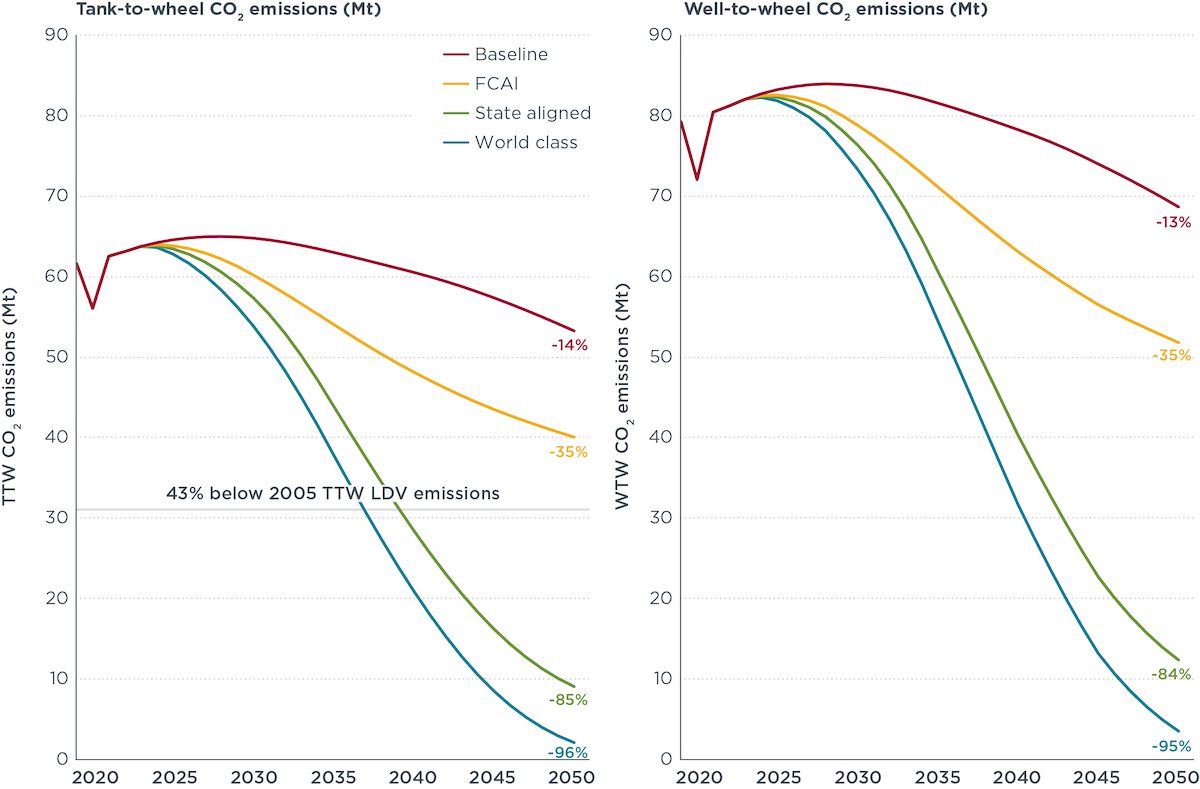Working Paper
Fuel efficiency standards to decarbonize Australia’s light-duty vehicles
The Australian government recently started a public consultation seeking inputs on introducing mandatory national vehicle fuel efficiency standards. This is an important development, as Australia has set an economywide net-zero carbon emissions target for 2050 and transport is currently the third largest source of greenhouse gas emissions in the country. To help understand the impact of different policies on the future carbon dioxide (CO2) emissions from the on-road light-duty vehicle (LDV) fleet, we constructed and modeled four scenarios: a business-as-usual scenario without any standards; a scenario corresponding to existing voluntary CO2 emissions targets set by Australia’s Federal Chamber of Automotive Industries (FCAI); a scenario corresponding to existing state-level electric vehicle targets; and a scenario that reflects world-class ambitions, including zero-emission vehicles as 100% of new sales by 2035. The authors also combined these scenarios with projections of vehicle sales and the carbon intensity of the electricity grid.
Results show that by aligning with world-class standards like those already adopted in the European Union, New Zealand, and California in the United States, Australia can almost fully decarbonize its LDV fleet by 2050. As illustrated in the figure below, implementing such standards starting in 2024 could reduce well-to-wheel CO2 emissions from the LDV fleet in Australia by 95% in 2050 compared to 2019. A less ambitious national standard that matches existing state-level electric vehicle targets would reduce well-to-wheel CO2 emissions from the LDV fleet by 84% in 2050 compared to 2019 but would allow 165 Mt more CO2 emissions from 2019 to 2050 than world-class standards. Additionally, the study finds that the FCAI targets are not stringent enough to spur emissions reduction from internal combustion engine vehicles if state electric vehicle targets are met—and they might even allow emissions from combustion engine vehicles to increase. The paper ends with specific recommendations for Australia on setting targets and designing the standards.

Figure. Estimated CO2 emissions under our four policy scenarios for Australia’s LDV stock from 2019 to 2050.
Attachments
Press release
